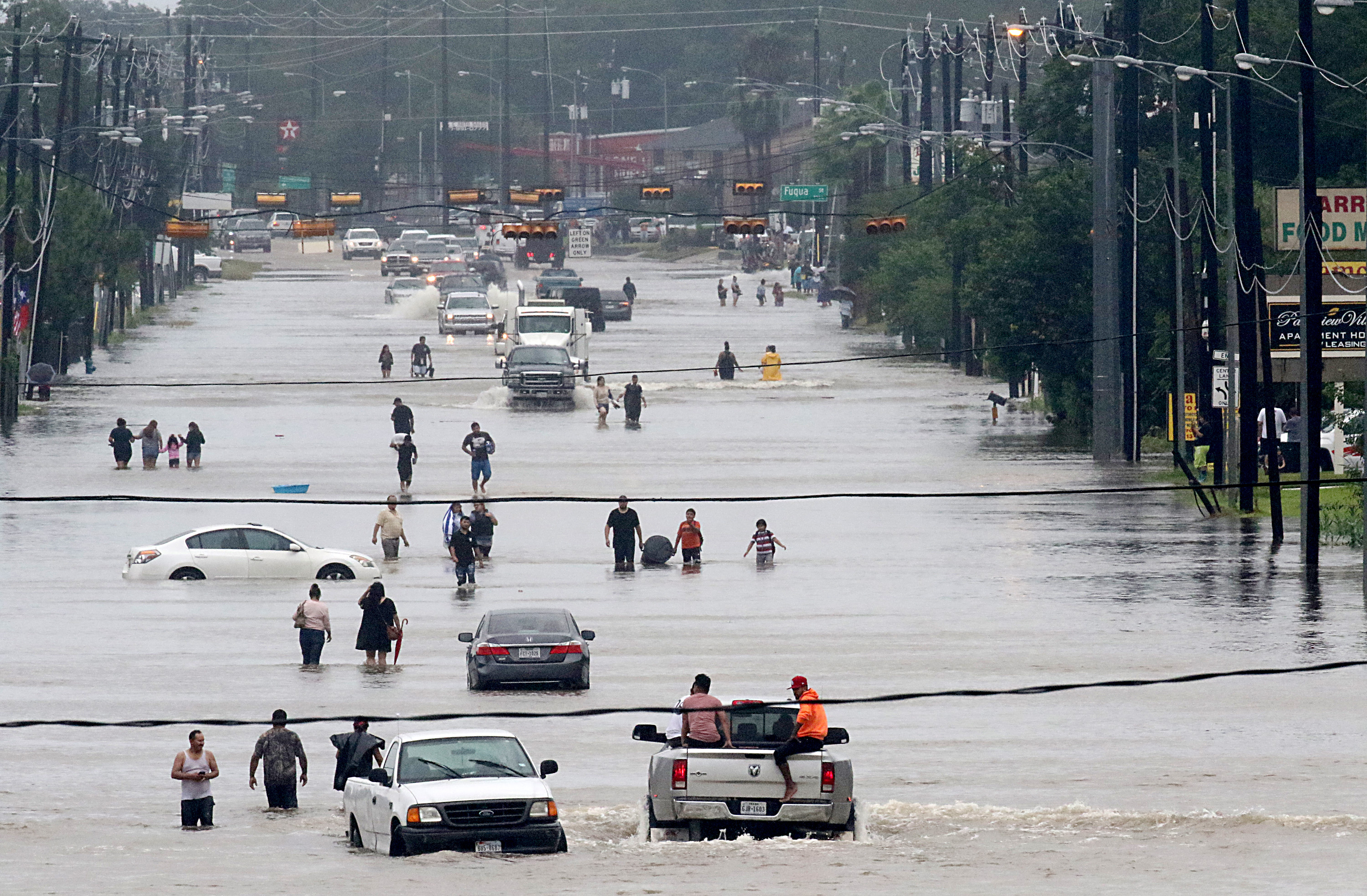Charity urges aid for sinking cities
People walk through the flooded waters of Telephone Rd in Houston in August 2017 during tropical storm Harvey (Thomas B. Shea)
Paris (AFP) – Governments must provide “major” investment in flood risk reduction to save coastal cities around the world, a charity said Friday, as rising seas and sinking urban areas pose unprecedented threats to millions of homes.
Cities such as Jakarta — which is sinking 25 centimetres (0.8 feet) each year — Bangkok, Houston and Shanghai risk being inundated within decades as a mixture of poor planning, megastorms and higher tides wreaks havoc.
London-based charity Christian Aid studied eight coastal cities around the world that are sinking, potentially compounding the misery that rising sea levels will inflict on inhabitants.
“The impacts of climate change will be seen across the world and as you saw this summer we had a very warm northern hemisphere, very abnormally so,” Kat Kramer, global climate lead at Christian Aid, told AFP.
“Many of the big cities in the developing world are extraordinarily vulnerable to climate change which is why it’s very important that they are given support to adapt and build resilience.
“Lives are already being lost through extreme weather events,” Kramer added.
The call coincides with the release next week of a major United Nations report expected to urge governments to drastically increase their efforts to limit global temperature rises.
The Intergovernmental Panel on Climate Change will examine the effect of global warming of 1.5 degrees Celsius (2.7 degrees Fahrenheit) above preindustrial levels.
That is the most ambitious target that nations signed up to in the 2015 Paris treaty on climate change, which aims to limit temperature increases to “well below 2C” by the end of the century.
– ‘Natural measures’ –
But even keeping the world within that temperature range will have a catastrophic impact on coastal cities, with some studies showing a 2C increase could raise global sea levels by up to half a metre.
Thursday’s paper picked out Jakarta, Bangkok, Lagos, Manila, Dhaka, Shanghai, Houston and London — home to a combined 100 million people — as particularly at risk.
The charity highlighted a host of local factors that contribute to sinkage, the majority manmade.
In Jakarta, a city of 10 million people that sits on a confluence of 13 rivers, half the population lacks access to piped water, so many dig illegal wells to extract groundwater.
This puts greater pressure on the soil, which doesn’t get replenished as it should by rainfall as nearly all of the city is covered in asphalt and concrete.
In Houston, efforts to provide a growing population with drinking water have also caused land to sink — an effect made worse by sea level rises and storm surges.
Kramer said large infrastructure such as sea walls or London’s Thames Barrier could help mitigate the damage, but also urged governments to preserve nature’s own defences.
“Something noticeable with the Asian tsunami (2004) of was that areas that had their mangroves intact had greater resilience to that kind of storm surge,” she said.
“There are many ways that natural measures can help if they are left intact.”
Disclaimer: This story has not been edited by Siliconeer and is published from a syndicated feed. Siliconeer does not assume any liability for the above story. Validity of the above story is for 7 Days from original date of publishing. Content copyright AFP.


